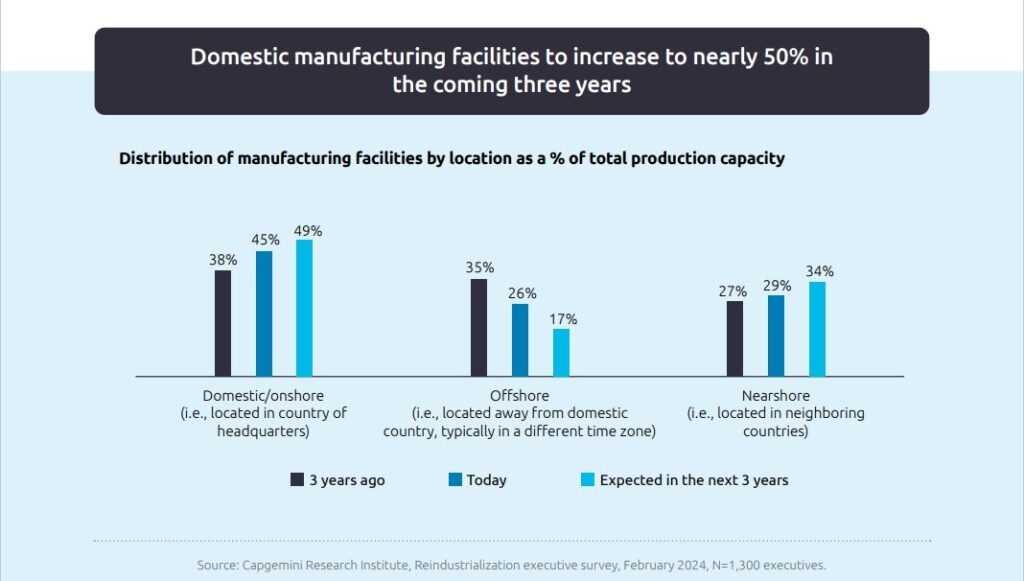Report from the Capgemini Research Institute
In recent years, there has been a notable trend in Europe and the United States towards reindustrialization: re-establishing global supply chains and manufacturing operations closer to – or within – their domestic markets.
The resurgence of manufacturing: Reindustrialization strategies in Europe and the US, a new report from the Capgemini Research Institute, found that the total reindustrialization investment by European and US organizations is projected to reach $3.4 trillion over the next three years. Among the organizations surveyed for the report, this represents an average allocation of 8.7% of revenue.

Reindustrialization is driven by the need for increased supply chain resilience and flexibility, the desire to create and retain skilled manufacturing jobs, the pursuit of climate targets, and the goal of regaining a competitive manufacturing edge.
External factors have also been fueling this shift, including the global pandemic, geopolitical tensions, changes in regulation, and rapid advancements in technology.
Organizations are actively reindustrializing to gain a competitive advantage and to help become more sustainable. Seventy-two percent of organizations are currently developing a reindustrialization strategy or already have one in place. On average, they predict a 13.6% reduction in carbon emissions and a 12.7% increase in customer satisfaction within the next three years.
The benefits of reindustrialization have led to increased domestic manufacturing and reshoring of production. According to The resurgence of manufacturing: Reindustrialization strategies in Europe and the US, 47% of organizations surveyed have already invested in reshoring. As a result, the share of onshore manufacturing capacity is projected to rise to 49% of the total in the next three years, up from 45% currently. Meanwhile, offshore production is expected to decrease from 26% to 17% in the same period.

Digital technologies are considered a crucial enabler for reindustrialization. The Capgemini Research Institute found that 68% of executives express confidence in reindustrialization’s potential to drive innovation and technological progress.
Organizations mostly concentrate on updating current manufacturing facilities (60% are deploying “brownfield approach” in their strategies). The reliance on advanced technologies such as AI, machine learning, automation, and data analytics is prevalent in reindustrialization efforts. Emerging technologies like 5G/edge, generative AI, and digital twins are projected to witness significant growth in the next three years.
However, reindustrialization is not only reliant on advanced technology; it also relies on a skilled workforce. Seventy-two percent of executives believe it will create demand for more skilled manufacturing labor, and around half anticipate an increase in manufacturing jobs, resulting in a boost in employment. Additionally, 51% of executives recognize the need to upskill their current workforce, while most (64%) expect the proportion of manufacturing workers with advanced digital skills to increase significantly over the next three years.
Reindustrialization represents an opportunity for organizations to embrace change and respond proactively to the challenges and opportunities that lie ahead – but it must be done with a clear strategy.
To find out more download The resurgence of manufacturing: Reindustrialization strategies in Europe and the US.
Source: Capgemini Research Institute




